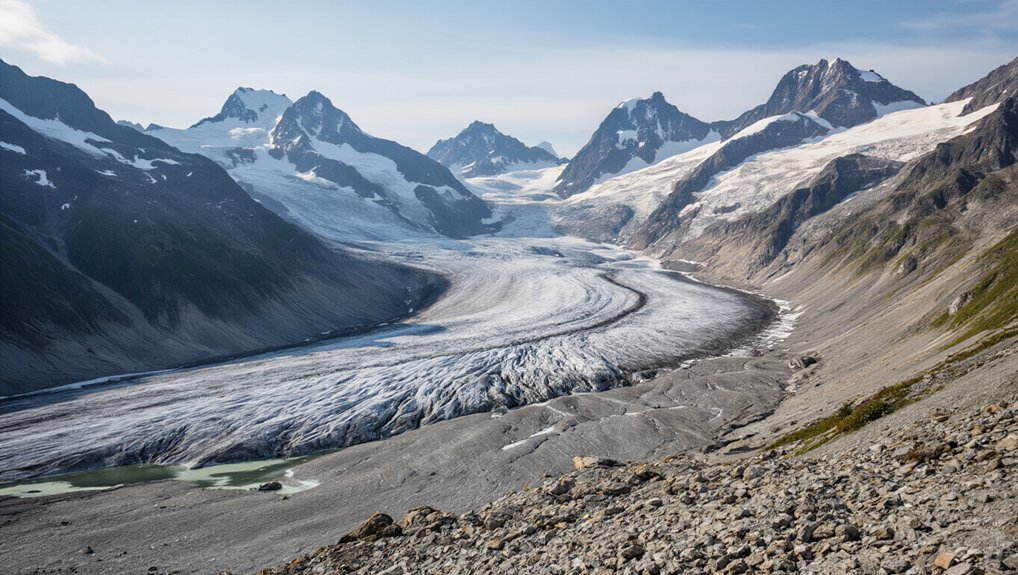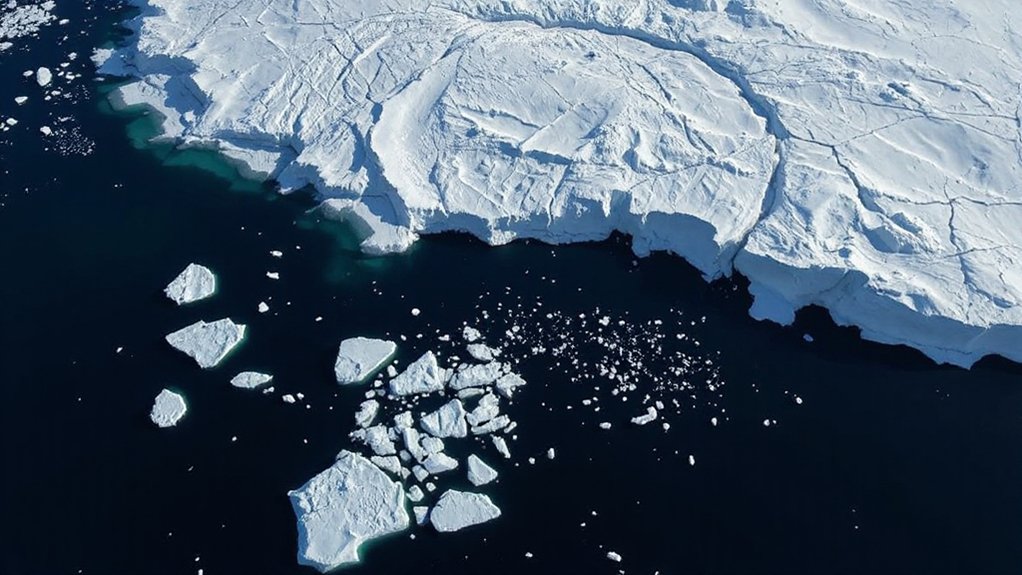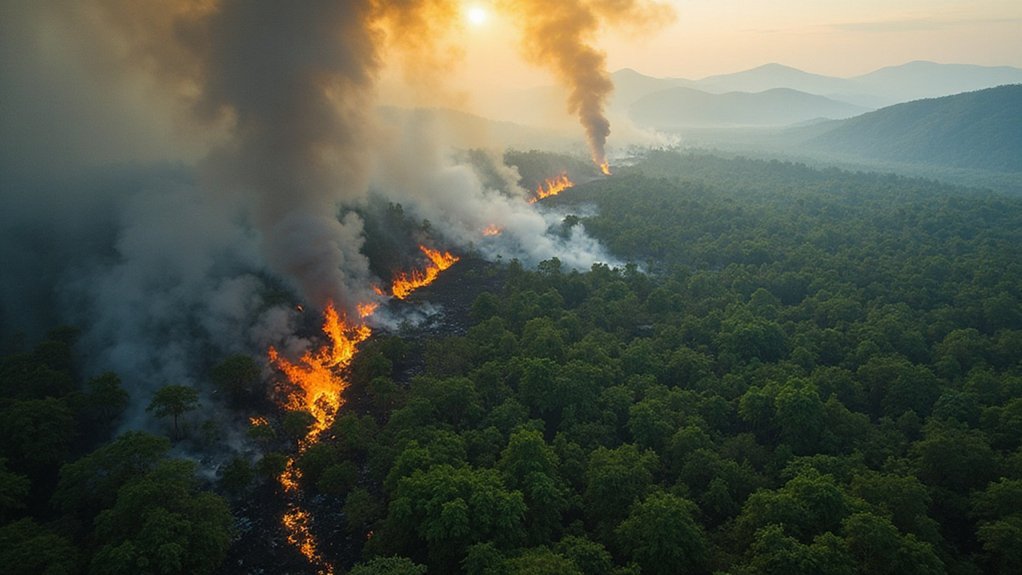As Swiss glaciers surrender their winter ice reserves before summer even reaches its midpoint, experts are sounding the alarm on an accelerating crisis decades in the making. The numbers are grim. Swiss glaciers have shed nearly 40% of their volume since 2000, with a shocking 10% vanishing in just 2022 and 2023 combined. This isn’t your grandparents’ climate change. It’s happening right now, faster than ever.
The iconic Aletsch Glacier, once a crown jewel of Alpine majesty, has retreated more than 1,300 meters since 1984. That’s over three-quarters of a mile, gone. Kaput. Over 1,000 smaller glaciers have completely disappeared already. Let that sink in.
The Alps are losing their icy crown jewels, with every meter of glacier retreat marking our climate failure.
What’s causing this icy apocalypse? Alpine temperatures have soared 3°C since the 1970s. That might not sound like much, but for glaciers, it’s a death sentence. Winter accumulation simply can’t keep up with summer melting anymore. This year’s abundant winter snow? Already melted away, and summer’s barely started. So much for nature’s resilience.
The consequences aren’t just aesthetic. These glaciers provide drinking water and irrigation for vast areas across Switzerland and Europe. They feed hydropower plants that keep the lights on. Switzerland relies on glacial meltwater to generate most of its electricity through hydropower systems. If we were to stabilize global warming between 1.5°C and 2°C, we could still save a quarter of Switzerland’s glacial ice. Swiss tourism? Good luck attracting visitors to see bare mountain faces instead of gleaming ice fields. Those postcard-perfect views are melting away faster than an ice cream cone in August.
Scientists aren’t just watching helplessly. The Swiss Glacier Monitoring Network tracks these changes year after year. Some desperate measures include covering glaciers with giant blankets – like putting ice packs on Switzerland’s fever. Early warning systems monitor for collapse risks that could threaten nearby communities.
Without drastic greenhouse gas reductions, Switzerland could wave goodbye to all its glaciers by 2100. The land of chocolate, watches, and banking will lose a defining feature of its terrain and identity.
Three hundred square kilometers of glacier – an area 3.5 times the size of Lake Zurich – has vanished since 1987. That’s not climate change. That’s climate changed.
References
- https://earthobservatory.nasa.gov/images/154043/glacial-losses-in-the-swiss-alps
- https://www.lingexp.uni-tuebingen.de/z2/Morphology/baroni.rows
- https://ethz.ch/en/news-and-events/eth-news/news/2025/03/switzerlands-glacier-could-vanish-completely-by-2100.html
- https://abcnews.go.com/International/wireStory/photos-show-swiss-glaciers-uncertain-future-ambassadors-climate-123179316
- https://www.swissinfo.ch/eng/climate-adaptation/swiss-glaciers-have-lost-the-mass-accumulated-over-the-winter/89630391








